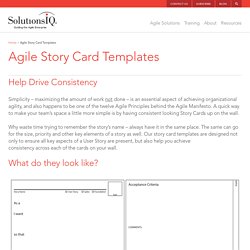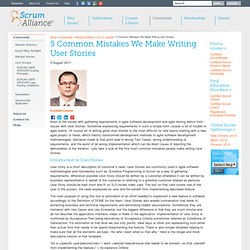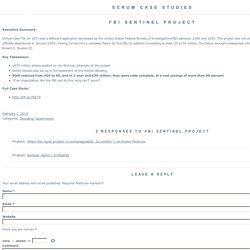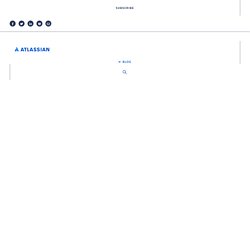

The New User Story Backlog is a Map - Jeff Patton & Associates. Why the flat user story backlog doesn’t work, and how to build a better backlog that will help you more effectively explain your system, prioritize, and plan your releases.

This is Gary. Gary and I worked together for a day to build a user story map – a better version of a product backlog. Building a user story map helps us focus on the big picture – the product as a whole instead of getting myopically focused on an individual story. When it comes time to prioritize, Gary did so with the entire context of the system in view. In Gary’s case he originally set out to build Mimi – short for Music Industry Marketing Interface. Mimi shipped after a lot of sweat and effort from Gary, Dave Hoover, and the fine folks at Obtiva. Youtube. Agile Digest Home - Agile Digest. Top 5 Most Interesting Scrum Boards - Eylean Blog. Scrum board is one of the most essential tools to ensure a smooth project and while most choose the traditional scrum boards for their teams, there are a few that decide to innovate and improve the traditions to fit their needs.

Therefore this week we gathered up the 5 most interesting (at least to us) boards and present them to you! The wall The first example comes from Agile but Pragmatic. Instead of dealing with a traditional scrum board, they suggest to expand it into a whole wall. This allows the team to put additional information such as results of retrospective – decisions and actions to take in the current sprint, parking for not active tasks, the sprint calendar and other things. Story mapping. Roman's Agile Product Management Tools.
Media Clips. Tools. Training Accreditation. Team. Scrum Role Playing. Scrum is very explicit in its clarification of roles and responsibilities.

Scrum has only three roles; together they cover the responsibilities needed to ensure a successful project. The Product Owner represents the customer and sets the vision, goals and priorities of the project. The PO then works collaboratively with the team to determine the details during each sprint, accepting work as it is completed. Sprint Planning Meeting. Agile Story Card Templates - SolutionsIQ. Help Drive Consistency Simplicity – maximizing the amount of work not done – is an essential aspect of achieving organizational agility, and also happens to be one of the twelve Agile Principles behind the Agile Manifesto.

A quick way to make your team’s space a little more simple is by having consistent looking Story Cards up on the wall. Why waste time trying to remember the story’s name – always have it in the same place. The same can go for the size, priority and other key elements of a story as well. Our story card templates are designed not only to ensure all key aspects of a User Story are present, but also help you achieve consistency across each of the cards on your wall. 5 Common Mistakes We Make Writing User Stories. Most of the issues with gathering requirements in agile software development and agile testing derive from issues with User Stories.

Somehow expressing requirements in such a simple form causes a lot of trouble to agile teams. Of course art of writing good User Stories is the most difficult for new teams starting with a new agile project or these, which freshly transformed development methods to agile software development methodologies. Mistakes made at that point lead to wrong Test Cases, wrong understanding of requirements, and the worst of all wrong implementation which can be direct cause of rejecting the deliverables of the iteration. Lets take a look at the five most common mistakes people make writing User Stories.
FBI's Sentinel Project: 5 Lessons Learned. Agency used agile development and private sector know-how to finish its long-delayed digital case management system.

American Red Cross Social Media Command Center (click image for larger view and for slideshow) After six years of development, the FBI says its next-gen digital case management system, Sentinel, is finally up and running. FBI Sentinel Project. Executive Summary: Virtual Case File (or VCF) was a software application developed by the United States Federal Bureau of Investigation(FBI) between 2000 and 2005.

The project was not close to completion when it was officially abandoned in January 2005, having turned into a complete fiasco for the FBI. In addition to wasting at least US $100 million, the failure brought widespread criticism to the bureau and its director, Robert S. Winston W. Royce. From a talk Royce gave on August 10, 1990 Winston Walker Royce (August 15, 1929 – June 7, 1995) was an American computer scientist, director at Lockheed Software Technology Center in Austin, Texas.

He was a pioneer in the field of software development,[1] known for his 1970 paper from which the Waterfall model for software development was mistakenly[2] drawn.[3] Biography[edit] Born in 1929, Royce entered the California Institute of Technology, where he received his BS in physics, his MS in aeronautical engineering and in 1959 his PhD in aeronautical engineering under Julian David Cole[4] with the thesis Transonic flow over a non-lifting, slender body of revolution. Royce had begun his career as Assistant Professor at the California Institute of Technology. Work[edit] Managing the development of large software systems[edit] Prioritizing Product Backlog Agile Development Practices 2010. Nexus Framework. What is Nexus?

Nexus is a framework that drives to the heart of scaling: cross-team dependencies and integration issues. It is an exoskeleton that rests on top of multiple Scrum Teams who work together to create an Integrated Increment. It builds on the Scrum framework and values. Overview - Large Scale Scrum (LeSS)
Better User Stories - Discover and Deliver What Customers Really Want - Video Course by Mike Cohn. Manifesto for Agile Software Development.webloc. A product manager's guide to release planning - Work Life by Atlassian. Growing up, my ski coach always used to say “If you don’t plan for it, it won’t happen.”

He wanted us to set goals and lay out a path to reach them. The same sentiment can be applied to building software, except building software is much more of a team sport than skiing. You need to make sure everyone on your team – plus other stakeholders like marketing and support teams – understands what you’re trying to build, why you’re building it, how long you expect it to take, and how the project is tracking towards release. 8 Tips for Creating A Compelling Product Vision. Creating and managing a successful product requires a lot of time and energy. In order to be fully committed, you have to be convinced that what you are doing is right and have a clear vision of where to take your product.
This post shares eight tips to help you create an effective product vision that inspires the development team and the stakeholders. 8 Tips for Creating A Compelling Product Vision. Manifesto for Agile Software Development. The Scrum Guide. Agile Alliance. Home - DevOps.com.
Burndown vs Burnup Chart. Visualize your workflow with the Cumulative Flow Diagram. Do you know how long it takes for a task to go through every stage of your workflow? One of the tools you can use to track the project progress and visualize the team effort is the Cumulative Flow Diagram (CFD). This post intend to show you how you will definitely benefit from applying a Cumulative Flow Diagram to your process. Why use the Cumulative Flow Diagram? The Cumulative Flow Diagram is one of the most popular graphs used by Kanban teams.
The CFD’s main purpose is to improve your process by providing insight into cycle time, issues, and also by identifying potential bottlenecks.
Product Roadmaps. Defining MVP, MMF, MMP, and MMR. The term minimal viable product (MVP) has achieved buzzword status in recent times and I’m now hearing people throwing around the term MVP almost on a daily basis. Sometimes they’re using it correctly but many times they aren’t. Frankly it’s driving me nuts. Https less.works resources LeSS complete picture.pdf.webloc. SAFe 5.0 Framework SAFe Big Picture.webloc. Scrum.org.webloc. Scrum Components User Stories. What Are Story Points?.webloc. Project Success Sliders: Agile Project ROI. Project Success Sliders are a way for key project stakeholders or a product owner to convey their expectations to the team.
Chapter 10 MoSCoW Prioritisation.webloc. Our Journey - Greenleaf Center for Servant Leadership. Robert K. Greenleaf founded the nonprofit Greenleaf Center (first called “The Center for Applied Ethics”) in 1964. Not long after, Greenleaf published The Servant as Leader, a landmark essay that coined the phrase “servant-leader” and launched the modern servant leadership movement. Top 7 Most Popular Agile Estimation Methods for User Stories.